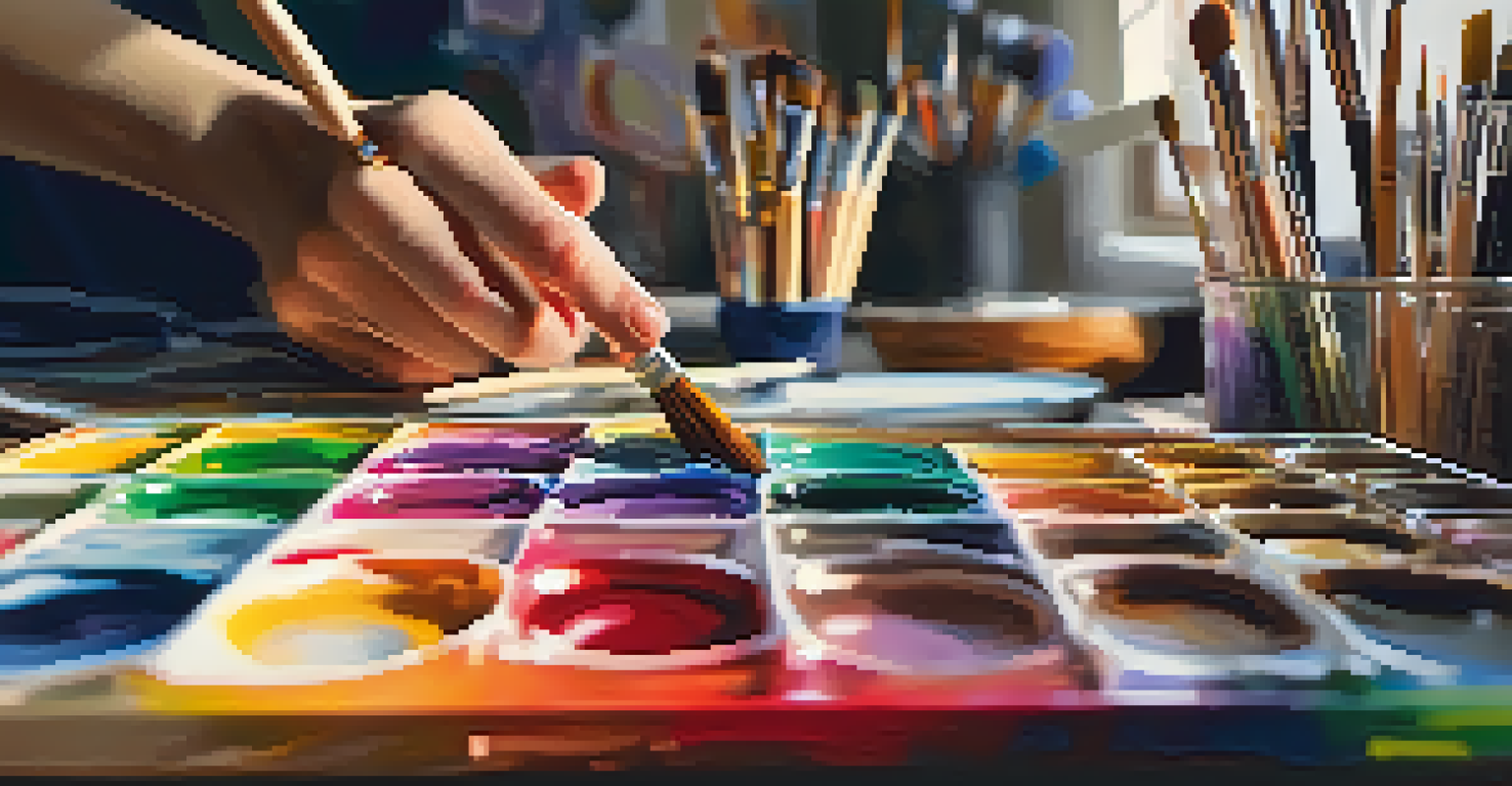Understanding Art Therapy's Role in Trauma Recovery Processes

What is Art Therapy and How Does It Work?
Art therapy is a therapeutic approach that uses creative processes to help individuals express emotions and experiences, especially those related to trauma. It combines psychology and art to create a safe space where feelings can be explored without the limitations of traditional verbal communication.
Art is not what you see, but what you make others see.
In art therapy, clients engage in various artistic activities, such as painting, drawing, or sculpting, often guided by a trained therapist. This hands-on approach can facilitate self-discovery and emotional healing, allowing individuals to process complex feelings that might be difficult to articulate.
By expressing themselves artistically, clients often find new insights into their trauma, promoting a sense of empowerment and control over their recovery journey. This method not only encourages creativity but also fosters a deeper connection to emotional experiences.
The Impact of Trauma on Mental Health
Trauma can significantly affect mental health, leading to conditions like PTSD, anxiety, and depression. Individuals may struggle with overwhelming emotions, flashbacks, or feelings of isolation, making it challenging to engage in traditional therapeutic methods.

Understanding the emotional impact of trauma is crucial, as it not only affects how individuals perceive themselves but also how they relate to others. This can create a cycle of avoidance, where individuals retreat from social interactions and healthy coping mechanisms.
Art Therapy Aids Emotional Healing
Art therapy uses creative expression to help individuals process trauma and emotions, promoting empowerment and control in their recovery.
Art therapy provides an alternative pathway for healing, allowing clients to express their trauma in a non-threatening way. This can break down the barriers that trauma creates, enabling individuals to reconnect with themselves and their surroundings.
How Art Therapy Facilitates Healing
Art therapy facilitates healing by allowing individuals to externalize their feelings in a tangible form. This process can be cathartic, as clients often find relief in creating art that symbolizes their experiences, pain, or hopes for the future.
The purpose of art is not a rarified, intellectual distillate; it is life, intensified, and a kind of life that is not always easy to bear.
The act of creating art can also serve as a mindfulness practice, helping individuals stay grounded in the moment and reducing anxiety. This focus on the present can be incredibly beneficial for those dealing with trauma-related stress.
Furthermore, art therapy encourages self-exploration and reflection, helping clients to process their emotions at their own pace. This gradual approach can lead to significant breakthroughs in understanding and coping with trauma.
Building a Therapeutic Relationship in Art Therapy
The relationship between a therapist and client is fundamental in art therapy. A strong therapeutic bond creates a safe environment where clients feel comfortable exploring their emotions and vulnerabilities.
Through consistent support and encouragement from the therapist, clients can build trust, which is essential for effective healing. This rapport allows for open communication, even when words may fail to capture the depth of their experiences.
Therapeutic Relationship is Key
A strong bond between therapist and client fosters a safe environment for exploring emotions, essential for effective healing.
In this nurturing space, clients can experiment with different art forms, explore their feelings, and gradually confront their trauma. The therapist's role is to guide this journey, offering insights and reflections that can deepen the healing process.
Art Therapy Techniques Used in Trauma Recovery
Various techniques are employed in art therapy to suit individual needs, such as drawing, painting, collage-making, or even digital art. Each method serves as a tool for clients to express their thoughts and feelings creatively.
For instance, guided imagery can be used, where therapists encourage clients to visualize a safe space and then translate that imagery into art. This technique not only promotes relaxation but also helps clients reclaim a sense of safety.
Another technique involves creating narrative art, where clients depict their stories through images. This can facilitate a deeper understanding of their trauma, enabling them to view their experiences from a new perspective.
The Benefits of Art Therapy for Trauma Survivors
Art therapy offers numerous benefits for trauma survivors, including improved emotional regulation, enhanced self-awareness, and increased self-esteem. By engaging in creative expression, clients often find new ways to cope with stress and anxiety.
Additionally, art therapy fosters a sense of community and connection, especially when group sessions are involved. Sharing art with others who have similar experiences can reduce feelings of isolation and promote healing through shared understanding.
Research Supports Art Therapy
Studies indicate that art therapy effectively reduces anxiety and improves emotional processing, making it a valuable complement to traditional therapies.
Ultimately, the benefits extend beyond the therapy room, as clients often carry the skills and insights gained into their daily lives, leading to lasting positive changes in their mental health and well-being.
Research Supporting Art Therapy in Trauma Recovery
Research has shown that art therapy can be effective in treating trauma-related symptoms, with studies indicating reduced anxiety and improved emotional processing among participants. These findings highlight the therapeutic power of creative expression in fostering healing.
Moreover, art therapy is increasingly being integrated into treatment plans for various populations, including veterans, survivors of abuse, and those with chronic illness. This growing recognition underscores the value of art therapy as a complementary approach to traditional therapies.

As more research emerges, the field continues to evolve, with practitioners adapting techniques based on the latest findings to better serve clients in their recovery journeys. This ongoing exploration ensures that art therapy remains a vital resource for those navigating the complexities of trauma.